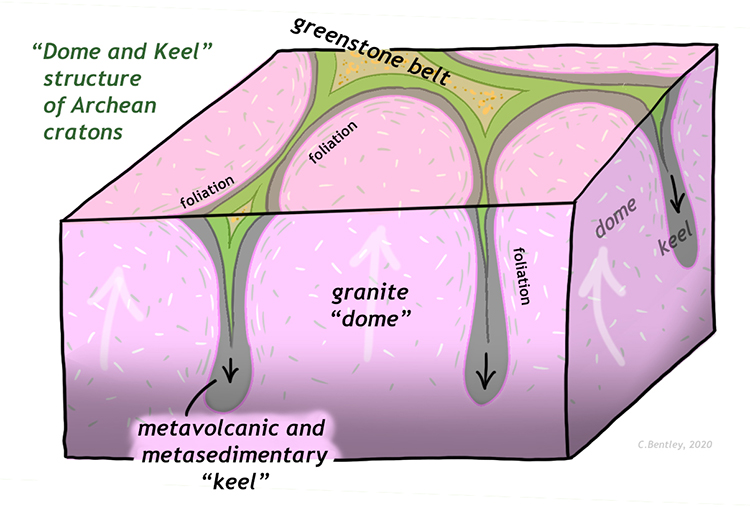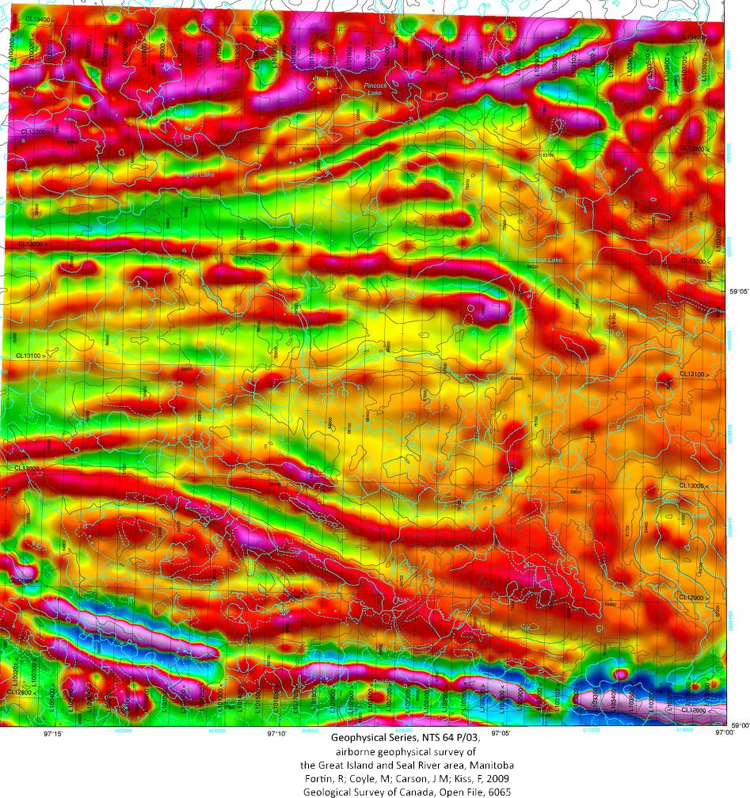18.4: Structure of greenstone belts
- Page ID
- 22749
If you examine a map view of the Pilbara Craton in Western Australia, you’ll see a distinctive pattern of shapes... Ignore the roads and towns, and focus on the colors and shapes in the unvegetated landscape instead:
Notice there how there are broad oval shaped light colored features, separated by more linear dark colored rocks? This is a fairly typical arrangement of rocks in Archean crust. The big light colored features are ‘granite’ (really: tonalite, trondjehmite, and granodiorite) and the dark colored lines separating them are steeply dipping layers of lightly metamorphosed volcanic and sedimentary rock. In the third dimension (depth), we think the metavolcanic and metasedimentary cover sequence pinches out, making a thin septum between blob-like granite domes. We call this geometry “dome and keel,” and it’s thought to represent a kind of vertical tectonics that dominated during the Archean. Here’s a diagram showing the relative motion of the plutonic domes and the surface strata folded into the thin keels:

The idea here is that the crust hadn’t yet organized itself into thick, laterally-continuous slabs like plates. Instead, on a much smaller scale, the primordial crust was forming through both plutonic processes (pushing up from below) and surface processes (eruption of lava and production and deposition of sediment). The rising domes of granite moved vertically, and to accommodate this relative motion, the surface rocks sagged downward, perhaps even foundering (akin to a sinking ship) and “dripping” into the dynamic mantle.

Though Archean cratons and greenstone belts tend to be in relatively placid corners of the modern Earth, where we can’t get a significant view into their three-dimensional structure, airborne magnetometry and gravitotometry can produce some insights into their structure, as this magnetic map of a greenstone belt in Manitoba, Canada, shows.
Overall, the dome-and-keel structure suggests that during the Archean, vertically-oriented, small-scale tectonics dominated, forming stable cratons of continental crust that have fortunately persisted until the present day, where they form the nuclei of most continents.
Did I Get It? - Quiz
What is the large-scale structure of greenstone belts?
a. Greenstone belts are found wrapping around dome-shaped bodies of "granite" in Archean cratons, thinning downward into blade-like "keels."
b. Broad rift-like features that show normal faulting and evaporite sedimentation.
c. Parallel metamorphic belts, indicating subduction and parallel magmatic arcs.
- Answer
-
a. Greenstone belts are found wrapping around dome-shaped bodies of "granite" in Archean cratons, thinning downward into blade-like "keels."


